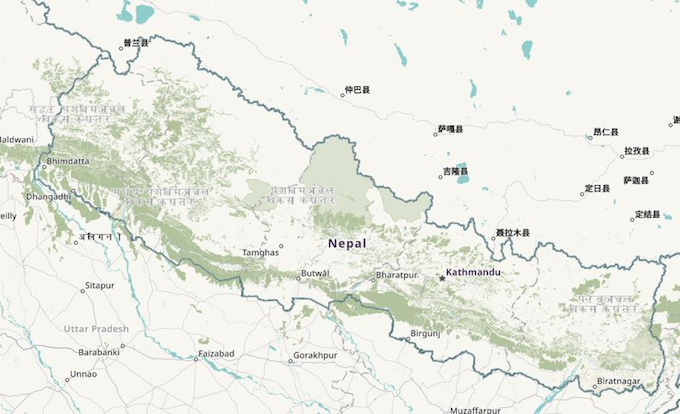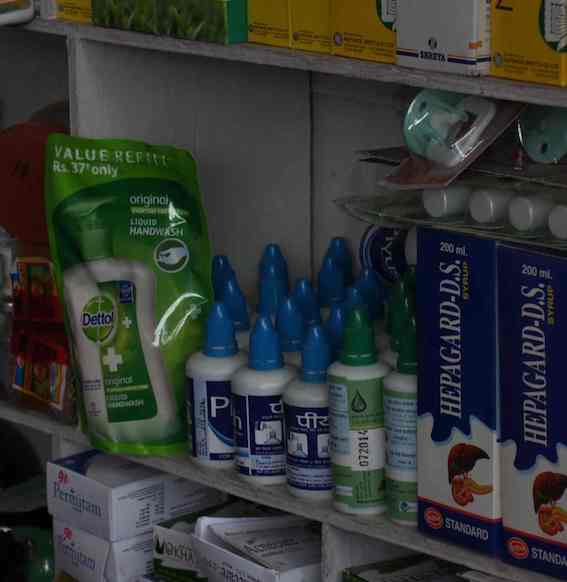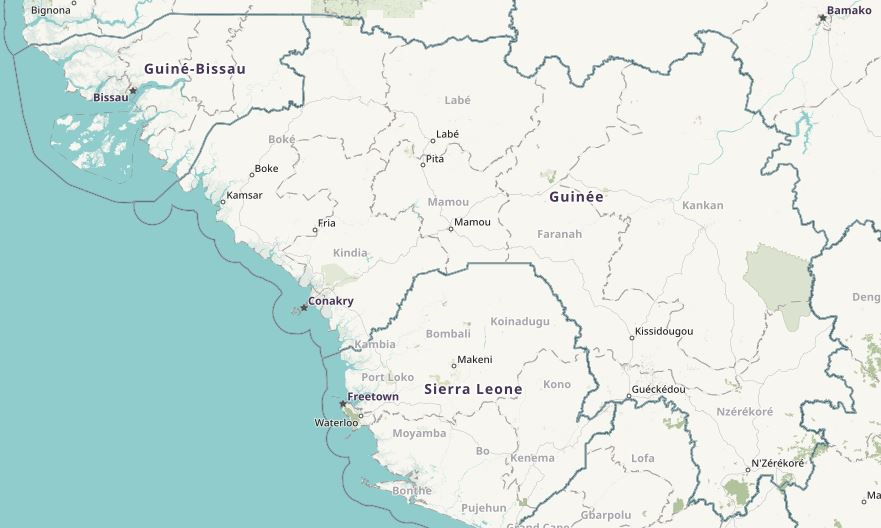Executive Summary
This case study supports and illustrates the theoretic factsheet "Smart subsidies - creating markets instead of distorting them" with practical insights.
Un-smart subsidies hampering the chlorine market in Nepal
Nepal has ever since been a country with a difficult context. Landlocked between China and India (see map below), 77 percent covered with hills and mountains, well known for the Himalayas and tragically gained notoriety in April 2015 for the disastrous earthquake.

Nepal ranks among the world’s poorest countries.
The country is earmarked by 82% of the population living in rural areas, deprived by very low accessibility. Despite the fact that Nepal is among the richest countries in terms of water resources, possessing more than 6000 rivers - water is scarce, especially in the Kathmandu valley with its high population density. Not only is the water supply insufficient, but also not safe to drink. Waterborne diseases are prevalent all over the country leading to one of the highest child mortality rates globally. To fight waterborne diseases, many NGOs, INGOs and local initiatives have been distributing and selling a variety of HWTS. Among them ENPHO, ECCA and PSI selling and distributing bottled chlorine for water disinfection. Nevertheless do many people only treat their water selectively as water quality is still a minor concern only.

a pharmacy. Source: Antenna, 2014
ENPHO started in 1994 with disseminating its product PIYUSH™. With the help of different international aid agencies, the retail price has always been kept low and sold as cheap product (NPR 20 (USD 0.19)). Though, through these subsidies the chlorine bottles were available even in very remote areas. During funding interruptions, chlorine disappeared almost from the market leaving people without any treatment option. This was a reason why PSI Nepal started to introduce its chlorine solution WaterGuard in 2005 hand-in-hand with massive awareness campaigns and at subsidised prices. In peak years, more than 700,000 bottles (240 ml at NPR 32-35 (USD 0.31-0.34) have been sold across Nepal. Beside these subsidised sales the products have been bought by government agencies and international NGOs to be distributed for free in certain regions and this not only during emergency situations.
Also ECCA, a local NGO active in WASH has been convinced of chlorine as efficient and affordable solution for water treatment in the Nepali context. Based on its conviction and aim to reach the BoP with a sustainable but affordable solution, its locally produced chlorine solution (sodium hypochlorite produced through an electrolysis process out of salt water with WATA™ technology invented by Antenna Foundation), branded WATASOL has been introduced in 2008. Within the project region stabilised chlorine is sold through students (see factsheet on social marketing) and through a distributor’s network to pharmacies. The sales have been very promising, also the repurchase rates. Though the market reach as such has ever since been limited. Reasons are manifold:
- Price of subsidised PIYUSH™ and WaterGuard have been below production costs, priming the potential consumers not willing to pay more than NPR 20 (USD 0.19). The reason for the under-pricing was always justified “because they are poor”, but in any case, most customers buying chlorine in Nepal were from the middle class as chlorine is mainly available in pharmacies. Accordingly the subsidies didn’t reach the poor that should have been benefitting of it in order to have access to safe water.
- Increased and sustainable prices, covering production costs and allowing margins for distribution, were not considered as ENPHO and PSI were relying on donations for their respective productions.
- Totally relying on subsidies for the production of WaterGuard and PIYUSH™ led to market outages during different periods and led WaterGuard to disappear from the market in 2012 after its peak sales of over 700,000 bottles in 2010. Though in 2015 PSI started again distributing HWTS, P&G Purifier of Water sachets, this time even for free.
- Free distribution and the too low prices led to a misperception of chlorine as very cheap product without any appeal destroying the market for sustainably marketed chlorination products.
- When free distribution ended, people were not eager to pay for the product, as they perceive it to be for free anytime.
Nevertheless has the destructive earthquake in 2015 lead to an unfortunate revival of chlorine. The sales of PIYUSH™ and WATASOL peaked and increased to around 1 million bottles sold in 2016. However the government and international NGOs have bought most of the bottles. Afterwards the majority of the bottles were distributed for free in the temporary shelters and in the highly affected regions. In 2017 sales and the use of water treatment options dropped again, as people don’t see a need for continuous water purification during “normal” situations.
Lessons learnt from subsidy history in Nepal
- Distributing chlorination products for free during emergencies is a virtue. But to distribute chlorine/HWTS for free during “normal” times hampers sustainable market development and can even crowd out for-profit HWTS market players, as customers are not eager to pay for their products anymore.
- Be clear on your production costs and don’t subsidise the product as such. As seen in the Nepali case will financial support that fades out interrupt the production and distribution and this does accordingly not serve people that count on these products.
- Margins need to be in place in order to allow sustainable supply chains in the long-term.
- Paradigm shift from short-term to long-term perspectives is needed, especially in focus on financial sustainability of production and distribution of HWTS, otherwise solutions will disappear as quickly as they emerge.
- In any case have the sales of water treatment options (not only chlorination products) to go hand-in-hand with awareness creation and social marketing activities.
- Smart subsidies will allow to have a long-term impact and a healthy financed enterprise.
Recommendations to pursue a smart subsidy approach within your initiative
- Identify activities within your company that serve the criteria of smart subsidies and will accordingly help you to run your company sustainably in the long-term. Such effort will facilitate and help creating a sustainable market.
- Try to develop partnerships with public and private organizations especially for social marketing activities as one single initiative of a small company will not have the reach necessary to develop a long-term impact on society.
- Your business model has to assure that at least the company’s OpEx covered by retail price and that profits can help supporting CapEx and social marketing, which can potentially be supported by smart subsidies.
| Positive example of WASH in Nepal Beside these somewhat deflating facts of very limited safe water promotion, there was a very successful campaign against open defecation in Nepal. Inspire yourself and watch the video on banning open defecation and improving water, sanitation and hygiene practices for school children: URL |
Lessons learnt from free chlorine distribution in Guinea by Tinkisso-Antenna

In Guinea, ranking 183 out of 188 on the 2015 UN Human Development Index (UNDP 2016), water is broadly available, but often in very poor quality when it reaches the customers. 87 % of drinking water is contaminated between its source and the actual point of use (CAMARA, 2017). Household water treatment and safe storage (HWTS) hence represent a huge potential to reduce the burden of water-related diseases among them Cholera unfortunately reoccurring disease often leading to epidemics in the country. Tinkisso-Antenna has been created in the context to fight Cholera in Guinea with the aim of improving hygiene practices and enabling the whole population affordable access to clean drinking water. In March 2014 another, even more lethal, Ebola epidemic hit Guinea. More than 2,500 people died in Guinea alone, only Sierra Leone and Liberia had more incidences. Even though there were two newly reported cases in March 2016, the World Health Organization (WHO) declared in the beginning of June 2016 the crisis of Ebola as finally contained in Guinea. During this devastating period of time, Tinkisso-Antenna managed to increase its sales of locally produced chlorine solution, branded Chlore C’ to 8,000,000 bottles. Part of the bottles distributed for free to fight the epidemic through Tinkisso-Antenna’s partners UNICEF and PSI, were branded differently in order not to deteriorate the branding and perception of Chlore C’. Nevertheless is the impact of the free distribution on the customer perception and willingness-to-pay not completely positive. The amount of decreased sales to institutions (UNICEF, PSI, public institutions) in 2016 has only been partly recovered by the market retail sales, leaving the company with much lower sales and difficulties to cover costs.
Rapport d’Activité Mobilisation Communautaire dans le Cadre de la Promotion du TED
Unpublished report
CAMARA, A. (2017): Rapport d’Activité Mobilisation Communautaire dans le Cadre de la Promotion du TED. Conakry: Tinkisso-Antenna URLSustainable access to drinking water through the development of a social enterprise in Guinea
Human Development for Everyone
Sustainability of Safe Water Supply Chains for the Base of the Pyramid in Nepal
Scaling-up safe water – the need for a new paradigm
Environment & Public Health Organization
ENPHO, a service-oriented, scientific, national non-governmental organization is constantly contributing towards sustainable community development by developing, demonstrating and disseminating eco-friendly technologies (eg. Rain Water Harvesting, EcoSan Toilets, DEWATS) and water treatment options (eg. Chlorine solution, SODIS, filters). ENPHO promotes integrated community based approaches for safe water, sustainable sanitation, solid waste management, hygienic behaviour, improving indoor air, and environmental and air quality monitoring for creating healthy and environmental friendly societies.
http://enpho.org/?programs_cat=safe-water [Accessed: 05.06.2018]
Environmental Camps for Conservation Awareness
(ECCA) is an environmental organization that focuses on raising awareness through young people in schools, as pupils provide excellent communication channels with communities. ECCA aims to improve access to drinking water in schools and communities in central and eastern Nepal, through the bottling and sale of locally produced chlorine, branded WATASOL.
http://ecca.org.np/home [Accessed: 05.06.2018]PSI Nepal
PSI Nepal works with local partners to implement sexual and reproductive health programs, including in family planning, maternal health, menstrual health and hygiene, as well as water, sanitation and hygiene.
http://www.psi.org/program/household-water-treatment/ [Accessed: 05.06.2018]
